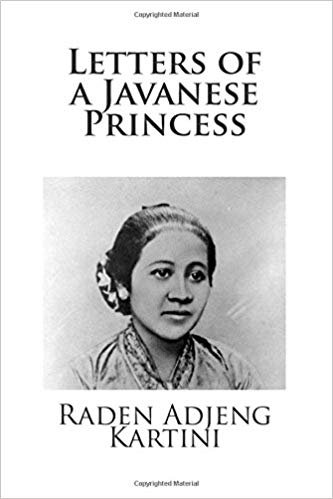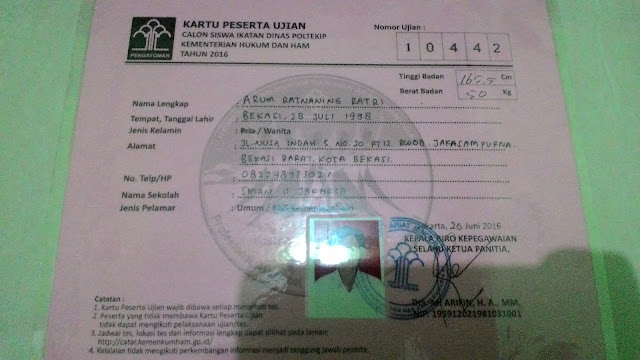Letters of a Javanese Princess and Black Boy: Identity and Acceptance
Letters of a Javanese Princess and
Black Boy: Identity and Acceptance
Letters
of a Javanese Princess or the letters of Raden Adjeng Kartini were first
published at the Hague in 1911 under the title, "Door Duisternis tot
Licht," (from Darkness into Light). They were collected and edited by Dr.
J.H. Abendanon, former Minister of Education and Industry for Netherland-India.
Many of the letters were written to him and to his wife, Moedertje.
Black Boy (1945) is a memoir by
American author, Richard Wright, detailing his youth in the South: Mississippi,
Arkansas, and Tennessee, and his eventual move to Chicago, where he establishes
his writing career and becomes involved with the Communist Party in the United
States.
This paper would analyze 2 aspects, identity
and acceptance, in Letters of a Javanese Princess and Black Boy novels.
Formerly, we need to know the meaning of those two aspects that later we would
analyze. In psychology, identity is the qualities, beliefs, personality, looks and/ or expressions that make a person (self-identity) or group (particular social category or social group). The process of identity can be creative or destructive. On the other hand, acceptance in this paper is more into social acceptance. Social acceptance affects people of all social and age groups. Social acceptance can be defined as tolerating the differences and diversity in others because most people attempt to look and act like others do in order to fit in.
The similarity between identity and
acceptance is that those two things are connected and create reciprocal
relationship. To have a fixed self-identity, usually the main character has to
go through some social acceptances. That way the main character in Letters of a
Javanese Princess and Black Boy finds his/her true self. Other way, to get the
acceptance from some people, group, or community, the character’s identity has
to be like how the community wants it.
Children and teenagers tend to
desire to be accepted among friends as part of that group, and act upon that
desire through peer pressure. Peer pressure
sometimes determines how people style their hair and clothing to "look
cool". A desire to be accepted by those whose
friendship one values can determine their
openness towards popular behavior smoking, drinking,
swearing, and more. People exhibit and avoid certain behaviors out of the
desire for the approval of
their friends, which may include drinking or
taking drugs.
Meanwhile, the difference between
identity and acceptance in those two novels are the process of the characters
have to go through to find their identity and how they express themselves so
that people could accept them.
In Letters of a Javanese Princess,
traditional customs make Kartini having her own principal for certain things.
Her principles are different to mostly women in her region. Her longing for
freedom leads her way of thinking to object some of the Javanese customs that
cage her desire, eagerness, and curiosity (page 16,19). Kartini’s high sense of
justice makes her think that everything should be fair. But, it is this nature
that makes Kartini aware that native Javanese are treated unfairly. And she
wants to fix that (page 23,26). Kartini likes to read books, and it broadens
her way of thinking. Her dream as well shapes her identity and what she wants
to be in the future (page 29). Kartini is happy if her principles are accepted
by others (page 32). Besides her outside appearance and title of Raden Ajoe,
she wants her inside such as her principles accepted by people around her.
Black Boy tells about a black boy
who are in hunger for food, knowledge, power, and acceptance. Richard would do
whatever it took to get accepted and be a member of the community/gang (page
91). Every time Richard moved to a new place, he immediately thought of a way
to be accepted by boys around his age in that area (page 106). But he moved to
new places so often that sometimes he got tired of going through the same social
acceptance cycle to the extent he wished people did not notice his presence
(page 144). When Richard joined a group, he hid his true identity and could not
let his friends knew what kind of life he was in. Watching his friends ate
whenever they were hanging out making Richard promised to himself that he would
end the hunger, the apartness, and the eternal difference. It is a good
decision, yet sounds bitter at the same time (page 148). Richard also had
difficulties in getting acceptance from his family and older people. He thought
that all his actions would be seen so wrong in the eyes of others. But, I think
it is because he never received proper learning in talking manner and etiquette
so that he became an awkward person (page 168). Richard wanted his dream
acknowledged and respected by others as well (page 174). Richard is a black, a
Negro that white people hate so much. Unfortunately, he lived in white
neighborhood. It made everything more difficult for him due to racism. He had
no idea and was confused to the unfair race treatment he received from other
people (page 193). He could not bear it and wanted to move to a better
surrounding as soon as possible (page 199). One day he had a chance to speak in
front of big audiences, but he was forbidden to say what was in his head by his
teacher (page 209). Racism to Negroes gives Richard a hard time working with
white people. White workers refused to teach him at work. Richard worked
multiple times at different places, and there I see that he is not accepted
nicely because he is a black (page 222-223). So many hard things Richard has to
go through in life simply just because he is a black.
In
Letters of a Javanese Princess, the main character named Kartini gathers social
acceptance by making people acknowledge her good intention and treating them as
a good person she is. She may be a rebel, hard-headed, and hyperactive that
people cannot accept easily at first sight. As people are getting to know her
better, they like her eventually. She makes people accept her true self.
Without changing her identity and her nature, she is accepted by people. While
Richard Wright in Black Boy novel decides that he has to change the way he acts,
behaves, and talks to get accepted by boys and girls in his age. Yet, social
acceptance and pretense are not changing his inner self. On the outside, he
acts as a tough and friendly person whom people like to be having around. Inside
his heart and mind, he knows not only he is a coward who are afraid of his own
family members but also an awkward person who wonders on why he cannot express
himself well. He always tries to fit in the society because life is going to be
tough for him if he does not do that. What happened with Kartini and Richard shows
that identity and acceptance have correlation. However, the way Kartini and
Richard get to the point where they have both identity and social acceptance
are different.
Author:
Arum Ratnaning Ratri
2211416050
English Literature 2016
Universitas Negeri Semarang
For subject:
Prose Analysis (503)


Komentar
Posting Komentar